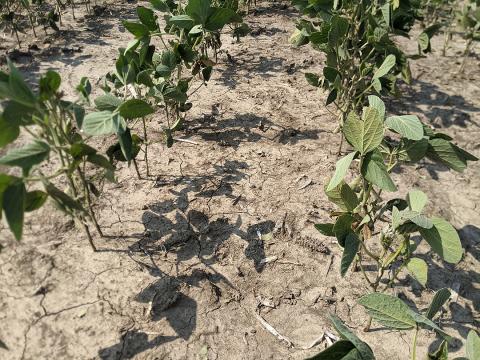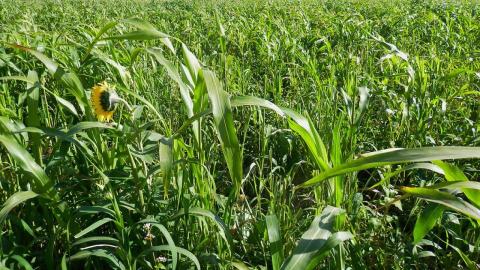Soybeans for Forage
August 17, 2023
Brown soybean plants that were evaluated by crop insurance at 2-4 bu/ac can be grazed if a grower doesn’t wish to harvest them. They’re just low quality.
Summer Annual Forage Pasture Walk on Aug. 23
August 11, 2023
During this year's pasture walk at ENREEC, participants will learn about warm-season annual productivity, annual forage fertility management, prussic acid and nitrate concerns, and more.
Forage Options for Drought-stressed Non-irrigated Vegetative Corn and Nitrate Concerns
June 29, 2023
UNL experts share recommendations for producers who are considering using non-irrigated drought-stressed corn as forage.

Interseeding Cover Crops into Early Season Corn and Soybean: Species Selection
April 27, 2023
In this article, Nebraska Extension evaluates numerous cover crop species for interseeding and provides guidance on how to choose the species that will best fit your production needs.
On-Farm Research Early-season Interseeding into Corn and Soybean Results (2019-2022)
April 13, 2023
The final results of a three-year study on interseeding cover crops in early-season corn and soybean include observations on yield, soil quality and net return.
FAQ for Fire Damage to Unharvested Crops and Harvested Ground
October 28, 2022
Nebraska Extension educators share recommendations for crops impacted by fire damage, highlighting grain and feed options for unharvested corn, what to expect of soil nutrient loss and techniques to avoid soil erosion.
Crop Residue Exchange Available for Listing Your Corn Residue Acres
November 2, 2023
Many cattle producers rely on corn residue for a winter feed resource. The Crop Residue Exchange can help facilitate a mutually beneficial forage rental partnership between producers.
Weighing Risk and Reward of Annual Forages
June 23, 2022
An influx of prevented plant acres provides freedom for producers to grow annual cover crops to counterbalance current forage prices.







